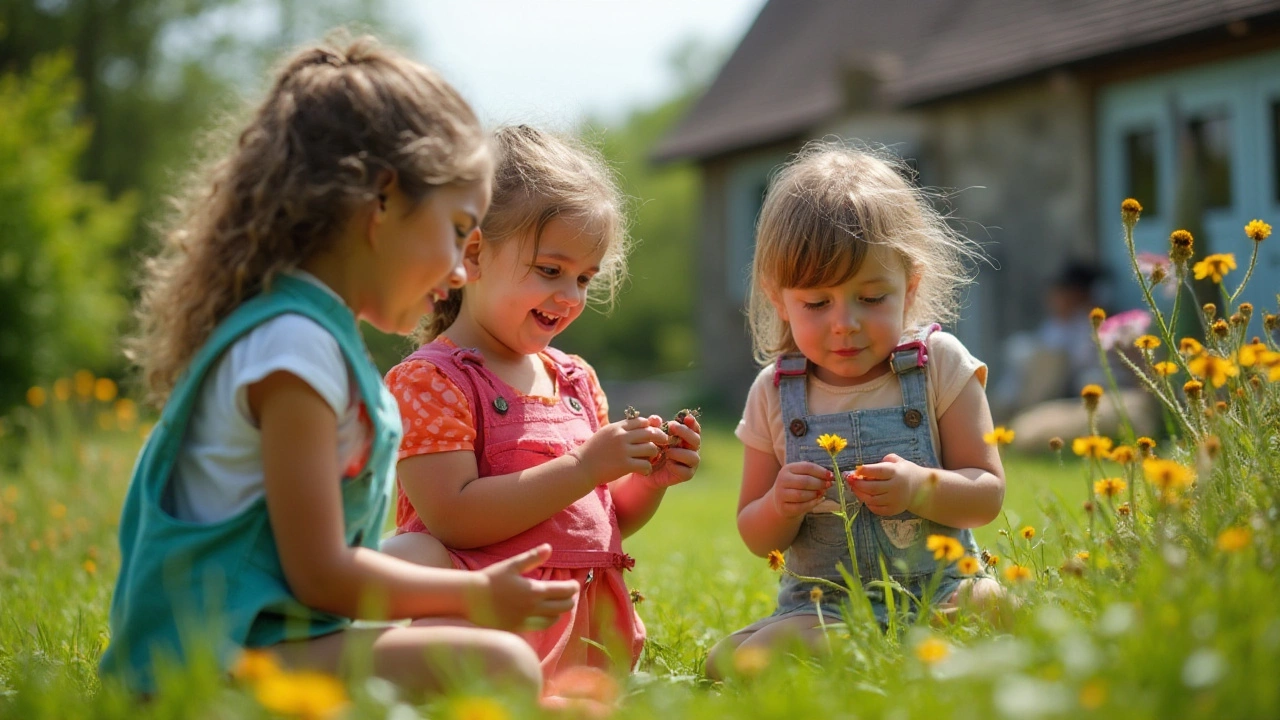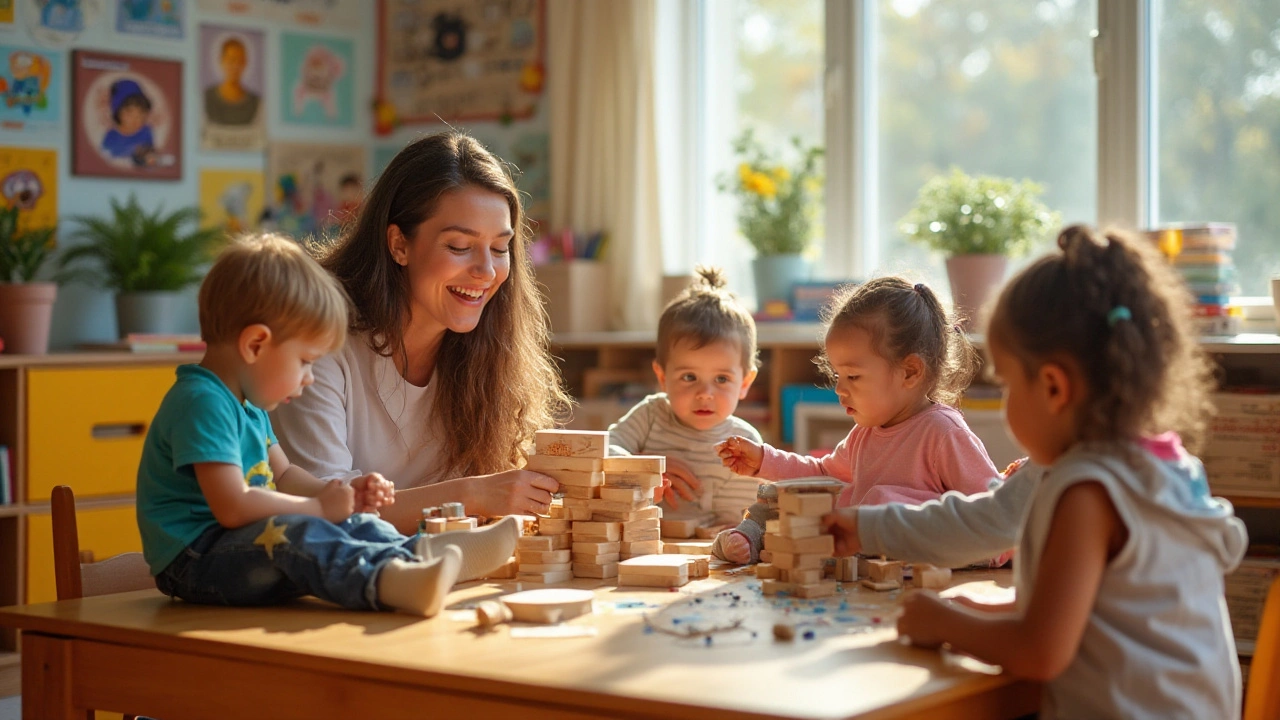When it comes to young children, their early years education lays the groundwork for future learning and development. The early years curriculum is more than just play; it's an essential framework that guides educators and parents in fostering a child's growth. It includes vital aspects such as physical, emotional, and cognitive development, tailoring activities to suit each child's unique learning style.
In these formative years, tapping into children's natural curiosity and desire to explore is key. By understanding the structured yet flexible nature of the early years curriculum, educators and parents can help children build a strong foundation. This approach not only supports academic achievement but also encourages social and emotional well-being.
- Introduction to Early Years Curriculum
- Core Principles and Elements
- Play-Based Learning and Activities
- Tips for Supporting Learning
Introduction to Early Years Curriculum
Understanding the early years curriculum is like embarking on a fascinating journey into the world of young minds. This curriculum refers to a structured educational framework used to guide the teaching and learning of children from birth to around eight years of age. It emphasizes not just academic learning, but the holistic development of a child, which includes social, emotional, physical, and cognitive growth. These early years are crucial because they set the stage for lifelong learning and have profound impacts on future success in school and beyond.
At the heart of the early years curriculum is the belief that learning should be joyful and engaging. This philosophy recognizes that children in their early years learn best through activities that are fun and intrinsically motivating. Play is not just a leisure activity; it is a powerful tool that helps children explore the world, understand their place in it, and build foundational skills. An interesting fact is that during play, children are often unconsciously solving complex problems, developing language skills, and learning to collaborate with peers.
The curriculum is often divided into several key areas of learning, which typically include communication and language, personal, social, and emotional development, physical development, literacy, mathematics, understanding of the world, and expressive arts and design. Each of these areas is designed to nurture specific competencies and allow children to explore different facets of their development. According to a report by the National Institute for Early Education Research, high-quality early education can lead to significant gains in a child’s language, literacy, and mathematical skills.
"The early years are not just preparation for the future, they are vitally important in themselves." – Development Matters, 2021
Recognizing the diversity of learners is another cornerstone of the early years approach. Every child comes to the table with unique backgrounds, abilities, and interests. Therefore, personalization is key to meeting each child's individual needs. Teachers and caregivers are encouraged to adapt their teaching strategies to accommodate different learning styles and paces. This adaptability ensures no child is left behind and each has the opportunity to shine.
For those involved in shaping these early experiences, there are indispensable tips for implementing a successful curriculum. First, it is important to create a warm and welcoming learning environment. This includes setting up spaces that are safe, vibrant, and conducive to exploration. Secondly, investing in quality materials and resources can enrich the learning experience. Lastly, consistent communication with families helps build a community that supports the child’s growth outside of the educational setting. By facilitating these connections, educators create a supportive network that encourages every child on their educational journey.

Core Principles and Elements
The early years curriculum isn't just a collection of activities; it's a thoughtfully designed framework that helps young minds grow. At its heart are fundamental principles that drive every aspect of learning and development. The curriculum is centered around understanding that each child is unique, with their own pace and style of learning. Recognizing these differences is pivotal in shaping educational outcomes and ensuring that each child feels supported and valued.
One of the core elements is 'learning through play', which is often regarded as the most effective way for children to grasp new concepts. Play allows children to explore, imagine, and understand the world around them. Often, educators incorporate structured and unstructured play opportunities throughout a child’s day, providing a balance that encourages cognitive, social, and emotional growth. As Fred Rogers, the beloved children's television personality, aptly put it,
'Play gives children a chance to practice what they are learning.'
Another critical principle is the emphasis on fostering a partnership with families. Parents are seen as primary educators, and their involvement is crucial in reinforcing learning outside the classroom. Encouraging open communication between educators and families can significantly enhance a child's educational journey. This collaboration ensures that children receive consistent support and that educators fully understand each child's background and needs.
The early years curriculum also prioritizes development across multiple domains: physical, emotional, social, and intellectual. This holistic approach ensures that children are well-rounded individuals. Physical activities develop motor skills, while social interactions teach empathy and cooperation. Cognitive development is supported through problem-solving and critical thinking tasks. Emotional well-being is nurtured by creating a safe and supportive environment.
In terms of specific content, the curriculum often includes language development, numeracy, creative expression, and understanding the environment. Language skills are cultivated through storytelling, role-play, and singing, enhancing vocabulary and communication skills. Numeracy is introduced in playful ways, like counting games or puzzles. Creativity is encouraged through arts and crafts, which offer children the freedom to express their unique perspectives. Environmental awareness is fostered through outdoor activities, where children learn about nature firsthand.
To illustrate the impact of the early years curriculum, consider the approach detailed in a study by the National Scientific Council on the Developing Child. Their findings indicate that high-quality early childhood education has lasting benefits on children's academic and social outcomes. It lays a foundation not only for school success but also for lifelong learning and adjustment.

Play-Based Learning and Activities
Play-based learning is a central concept in the early years curriculum, capturing the essence of how young minds adapt and grow. This approach taps into children's natural inclinations and interests, turning what appears as mere play into a powerful and effective learning tool. Through play, children are able to explore their environment, engage with peers, and learn crucial life skills. This method aligns wonderfully with the principle that children learn best when they are having fun and feeling safe. By embracing play, educators create a comforting bridge between newfound concepts and familiar routines.
An essential advantage of play-based learning is its inherent flexibility, allowing it to be adapted to fit various educational goals and settings. Whether it's structured activities led by a teacher or free play supervised from a peaceful distance, the process of learning is seamlessly interwoven into play. As children engage in these activities, they practice decision-making, problem-solving, and build social skills. Through imaginary play, a mere cardboard box can transform into a spaceship or a castle, showcasing creativity and innovation. These experiences help in developing critical thinking and the ability to view challenges from multiple perspectives.
The Role of the Educator
Educators play a crucial role in facilitating play-based learning, embracing their position as both guides and observers. They carefully design environments that provide a variety of materials and opportunities for exploration, enabling children to make discoveries on their own. Through intentional questioning and interaction, educators extend children's thinking, introducing new vocabulary, and challenging assumptions. By setting specific but flexible objectives, educators help ensure that play nurtures important skills while providing the freedom children crave. This delicate balance ensures educational goals are met without stifling a child's curiosity or creativity.
"Play is the highest form of research." - Albert Einstein
Research supports the effectiveness of play-based learning in building well-rounded individuals. A study conducted by the Australian Council for Educational Research found that children in play-based programs demonstrated stronger cognitive, social, and emotional development in comparison to their peers in more traditional classroom settings. This evidence highlights the importance of incorporating play into early education, underscoring its role in a child's holistic development. The freedom to play allows children to express themselves, make choices, and build the confidence needed for lifelong learning.
With such profound benefits, play-based learning stands as a cornerstone in the early education landscape. It champions the idea that learning should be as dynamic and engaging as the children it aims to serve. Understanding and implementing play-based activities ensures that young learners grow up to be inquisitive, resourceful, and empathetic individuals. The power of play, as they say, can indeed change the world.

Tips for Supporting Learning
Supporting a young child's learning journey takes more than just access to books and resources; it's about creating an environment that piques their natural curiosity and aligns with their development stages. At the core of the early years curriculum is the idea that each child learns at their own pace, influenced by their growth in emotional, social, and physical areas. To cultivate this, consider opportunities where play becomes a cornerstone, providing children the chance to experiment and explore ideas without fear of failure. Encouraging exploration and questioning helps in building a solid foundation of confidence and critical thinking which is indispensable in future academic endeavors.
An engaging way to nurture learning is by incorporating storytelling into everyday activities. Stories harness the power of imagination and can significantly improve a child's vocabulary and understanding of the world around them. By regularly sharing tales from different cultures or even crafting new ones together, parents and educators can stimulate cognitive and emotional growth. This helps children attribute meaning and develop empathy, enhancing their ability to connect with a diverse range of people and ideas.
"When educators prioritize storytelling and play, it transforms not just learning but the learner." - Dr. Patricia Kuhl, renowned in early childhood cognitive research
Diversifying learning activities is another key aspect. A mix of indoor and outdoor play, sensory-rich tasks, and hands-on projects allow children to draw connections between concepts and real-world applications. Simple acts like cooking together or planting a garden can serve as teachable moments, illustrating principles of science, math, and cooperation. It's essential for educators and parents alike to recognize and leverage these moments, ensuring that each interaction provides an opportunity for learning.
When technology is integrated thoughtfully, it can become a useful tool in the learning process. Interactive games and child-friendly apps that focus on educational goals can supplement traditional forms of teaching. However, it's crucial to maintain a balance, ensuring screen time is limited and high-quality. The digital world should be a complement rather than a replacement for conventional learning experiences. Statistics show that children who experience blended learning environments excel in adapting to new challenges, underscoring the importance of adaptive learning strategies.
Building a supportive learning atmosphere at home or in the classroom may also benefit from setting up activity zones. Design spaces with specific purposes, such as a reading nook, an art corner, or a science lab, where children know they can engage with relevant activities. This structure provides a sense of order and allows children to choose activities based on their interests, promoting a sense of autonomy. Such environments, enriched with varied stimuli, can foster a lifelong love of learning, a gift as valuable as any academic accolade.

